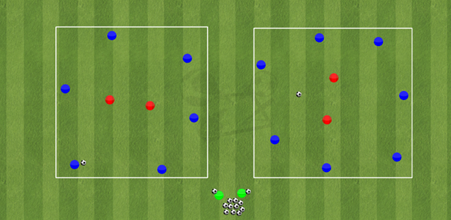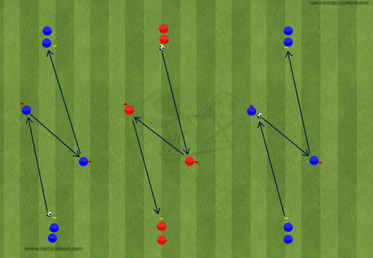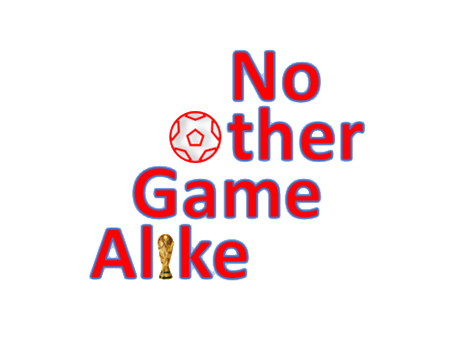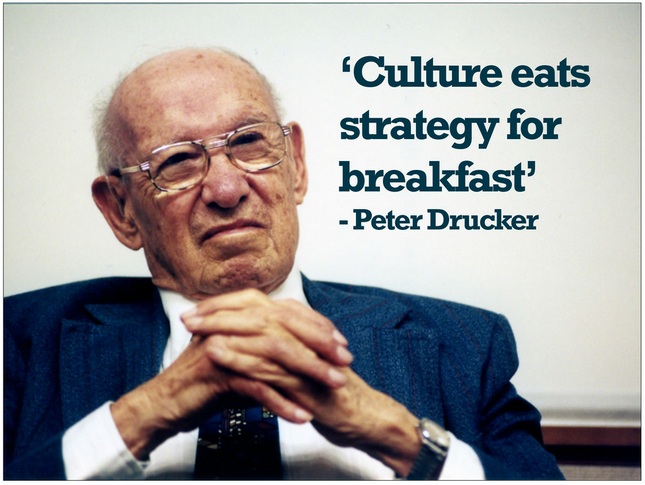
Culture > Strategy
Good afternoon Coaches!
I’ve had quite the couple of weeks. And I’m super excited to share with you what I learned.
I was lucky enough to be invited in to spend a week with one of Sweden’s biggest teams who are struggling near the bottom of the Superettan, and then to spend a week with one of Norway’s most historically successful teams who are currently flying in the Second Tier.
In the Swedish team, the style of play was amazing, the players are talented, the Head Coach is top drawer and it’s one of the biggest clubs in the country. So why were they struggling?
I wrote a report for the Head Coach identifying what I thought the answer was, but it was underscored in BIG, BOLD, BRIGHT COLOURS within 10 minutes on the pitch in Norway. They started with an Up, Back and Through man passing drill. It’s an exercise I’m not a big fan of. I see Academy and grassroots coaches do it all the time and I don’t think it’s wholly appropriate for the majority of youth players because there are better ways of teaching it, but that’s the story for another time.

They only did 2 sets of 1 minute of these with about 15 seconds rest in between, so it was clearly an activation thing.
What was next is when I started to see why these guys were so successful…
From there, they went into a Rondo. A 6v2 and a 7v2.

Nothing fancy, right?
Most people run this and it’s a social thing…
– If you get megged you stay in
– If you get 20 passes against you, you get a slow sarcastic clap.
What I started to observe was what made these guys different…
There only seemed to be 2 rules:
1. Only 1 touch
2. If a defender touched the ball, the defender who had been in longest was out of the middle, replaced by the player who lost it.
But it wasn’t the activity itself, but rather the way they played this game that was something else and was clearly the ‘secret’ to their success …
I was watching players work their tails off to rescue terrible passes from teammates.
Then when they couldn’t rescue the pass, the player who had put in the extraordinary effort to rescue it would immediately go in the middle, tearing after the ball.
These guys played like they were possessed. Instead of pointing fingers about who would have to defend in one of these ‘controversial’ moments, more often than not players would step in. It was a privilege for them!
This continued in the next exercise. Again, nothing special in terms of set-up but again, I was watching guys who weren’t normal…
They’d give a bad pass and lose it, and they were immediately defending.
They’d receive a bad pass and lose it, immediately defending.
They were fouled and lose it, but they’d be immediately up and back defending.
Throughout the whole 70 minute session, I saw one bit of bad communication and one bit of bad attitude, both from the same player who threw a hand up when, as a neutral on the outside, he felt a player didn’t move quickly enough to receive a pass into space and then in the game at the end, when he was tackled, he didn’t immediately track back but instead inspected his arm for a cut.
These players seemed to work to 3 rules:
– Don’t complain – WORK HARDER
– Don’t argue – WORK HARDER
– Don’t feel sorry for yourself – WORK HARDER
I was absolutely loving it. And luckily I got to spend the next week pestering the Head Coach and his staff about how they created this unbelievable Culture.
The keys seemed to be a combination of:
– Connection
– Communication
– High Standards
– Accountability
With these things, this club had gone from almost getting relegated in 2022 to, under the new leadership of the Head Coach from January this year, about to be promoted in 2023.
All from fixing their culture. As Peter Druckers says…
Now, you are probably asking, how do you create that with U9 kids. I wouldn’t recommend doing the Rondo as above. But there are ways to tap into what kids think and want and create a culture.
One way is to play ‘Arrival Games’. Instead of having them run through cones, juggle or do ball mastery to warm up, throw them into games. They play football because they want to play football. Harness that energy!
As soon as 2 players are there, play 1v1, then 2v1 then 2v2 etc. When you have 7 players, split them into a 2v1 and 2v2. Keeping it 3v3 max is great for the number of touches they’ll get. Put on some rules to this game to encourage certain play. Then, rather than coach it, police these rules.
My personal favourites are:
– No 1 touch play (making them take a touch and hopefully dribble!)
– Pass in or dribble in
– Scoring zone (again, making them dribble forward rather than shoot from anywhere)
– Cannot pass until they have used a skill
I’ve been working with a number of coaches for about 6 months now and this is something I share with them all and they have all reported back how well this has worked. They have even seen benefits such as:
– Kids gone from turning up 10 minutes late to 10 minutes early!
– Greater attention and concentration throughout the session
– Improved skill level and confidence to beat players
Try it and see how it works for you!
Over my 20 years of coaching, I have developed and implemented tons of ways to create an incredible Culture in Youth Football, from 4 year old beginners to U19 Academy players and share them in my Online Mentoring Programme.
For information on it, see noothergamealike.com/
Enjoy your week and weekend coaching!
And thanks for reading,
Michael

